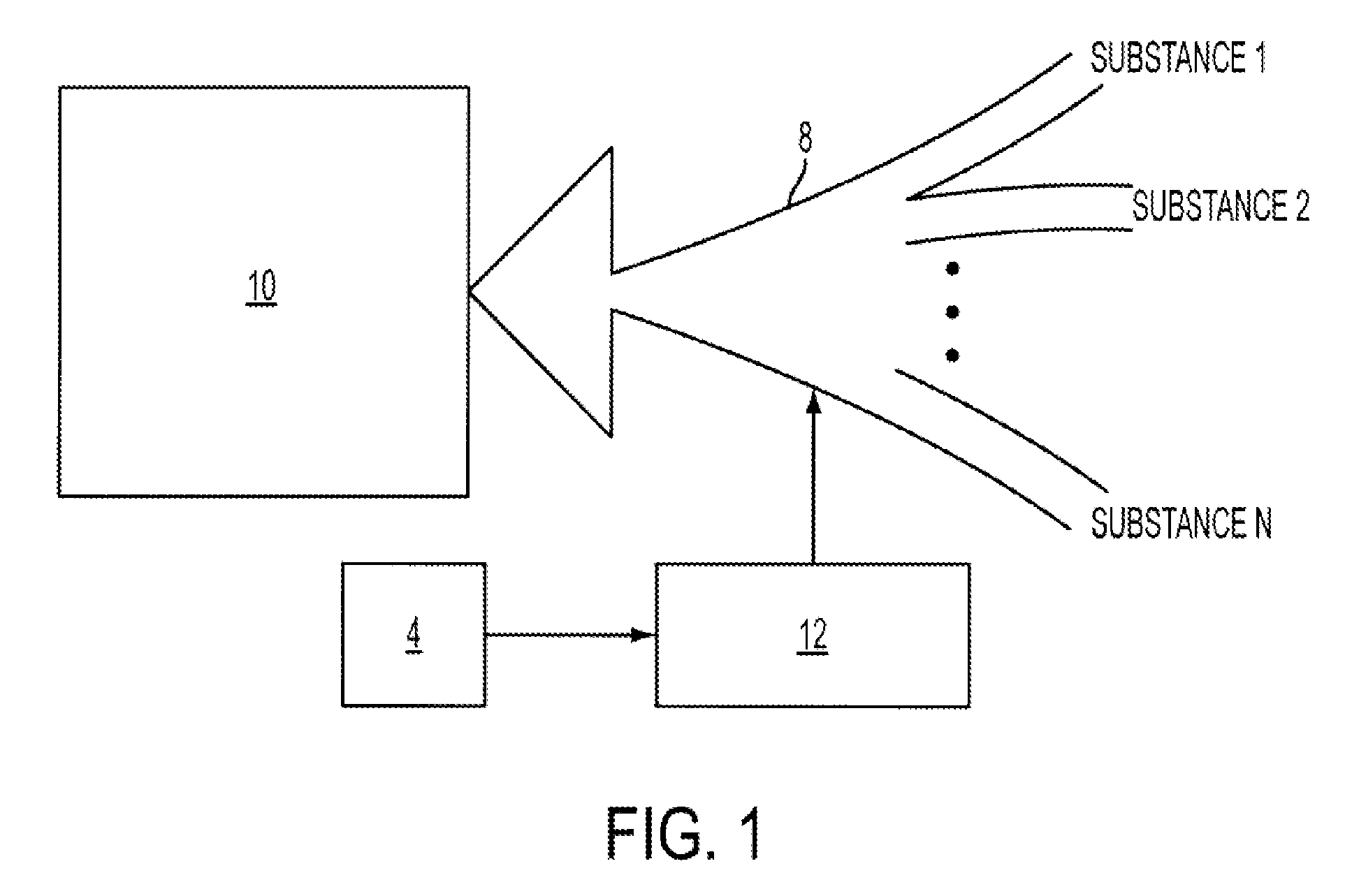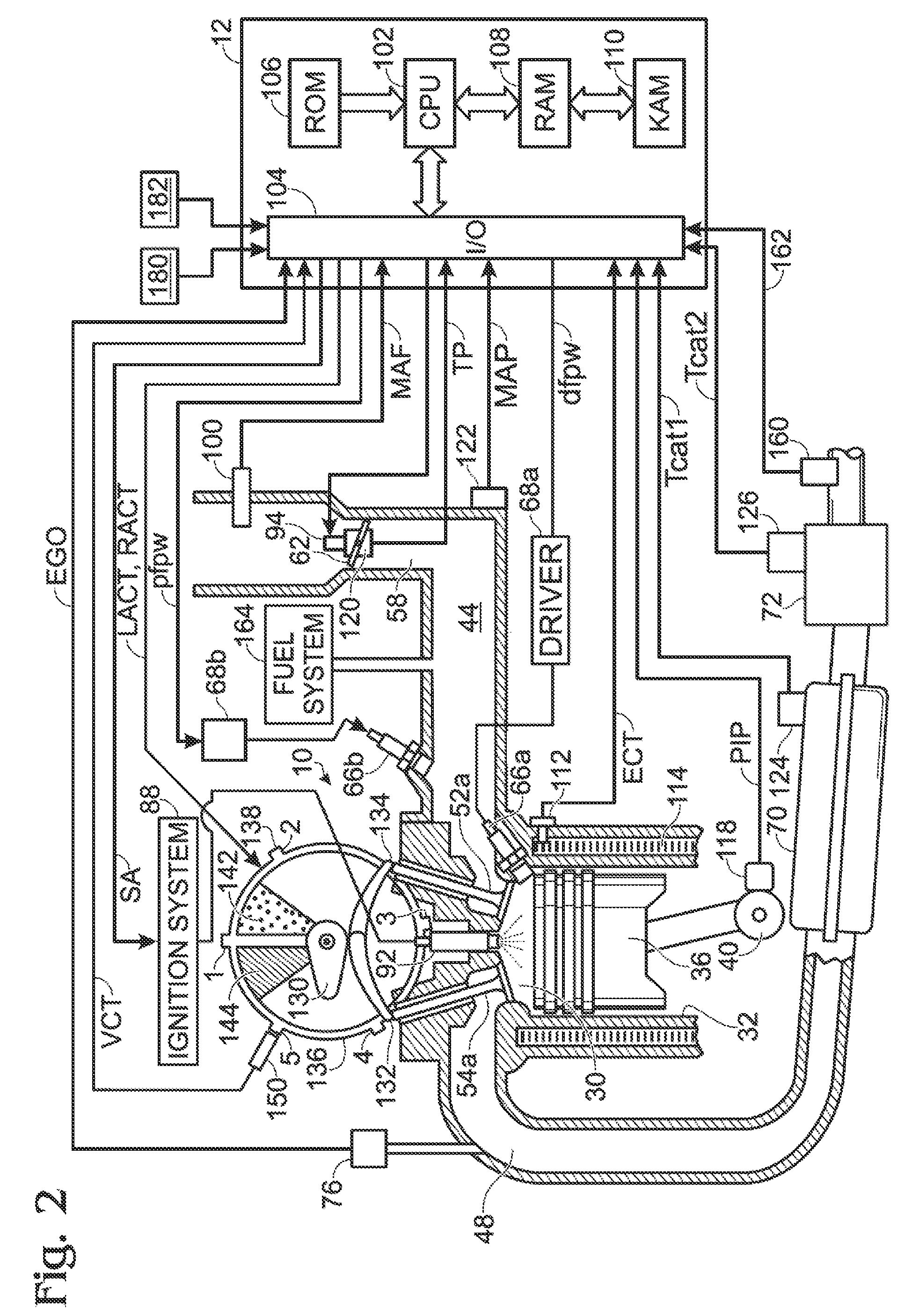Multiple combustion mode engine using direct alcohol injection
a technology of direct alcohol injection and combustion mode, which is applied in the direction of machines/engines, electrical control, instruments, etc., can solve the problems of pcci (premixed charge compression ignition), the operation of hcci and similar modes of operation may be limited to low loads (torque), and the present control problems, etc., to achieve the effect of increasing the compression ratio, reducing the number of engine components, and expanding the hcci design rang
- Summary
- Abstract
- Description
- Claims
- Application Information
AI Technical Summary
Benefits of technology
Problems solved by technology
Method used
Image
Examples
Embodiment Construction
[0012]Gasoline engines, particularly those with a boosting device, may employ a variable direct injection of a knock suppressing fuel such as an alcohol or alcohol blend to provide improved performance. As one prophetic example, an engine including a turbocharger and a high compression ratio along with selective and variable ethanol direct injection in addition to gasoline injection may achieve a 20%-30% increase in efficiency over a naturally aspirated spark ignition engine of larger size delivering the same torque and power. The directly injected ethanol provides a large knock suppression effect from the evaporative cooling of the fuel / air charge within the cylinder of the engine. This improvement in efficiency can enable the engine to be substantially downsized and / or operate at a higher compression ratio while providing a similar level of performance. These efficiency gains may be even further increased by use of a controlled auto-ignition e.g. a homogeneous charge compression i...
PUM
 Login to View More
Login to View More Abstract
Description
Claims
Application Information
 Login to View More
Login to View More - R&D
- Intellectual Property
- Life Sciences
- Materials
- Tech Scout
- Unparalleled Data Quality
- Higher Quality Content
- 60% Fewer Hallucinations
Browse by: Latest US Patents, China's latest patents, Technical Efficacy Thesaurus, Application Domain, Technology Topic, Popular Technical Reports.
© 2025 PatSnap. All rights reserved.Legal|Privacy policy|Modern Slavery Act Transparency Statement|Sitemap|About US| Contact US: help@patsnap.com



